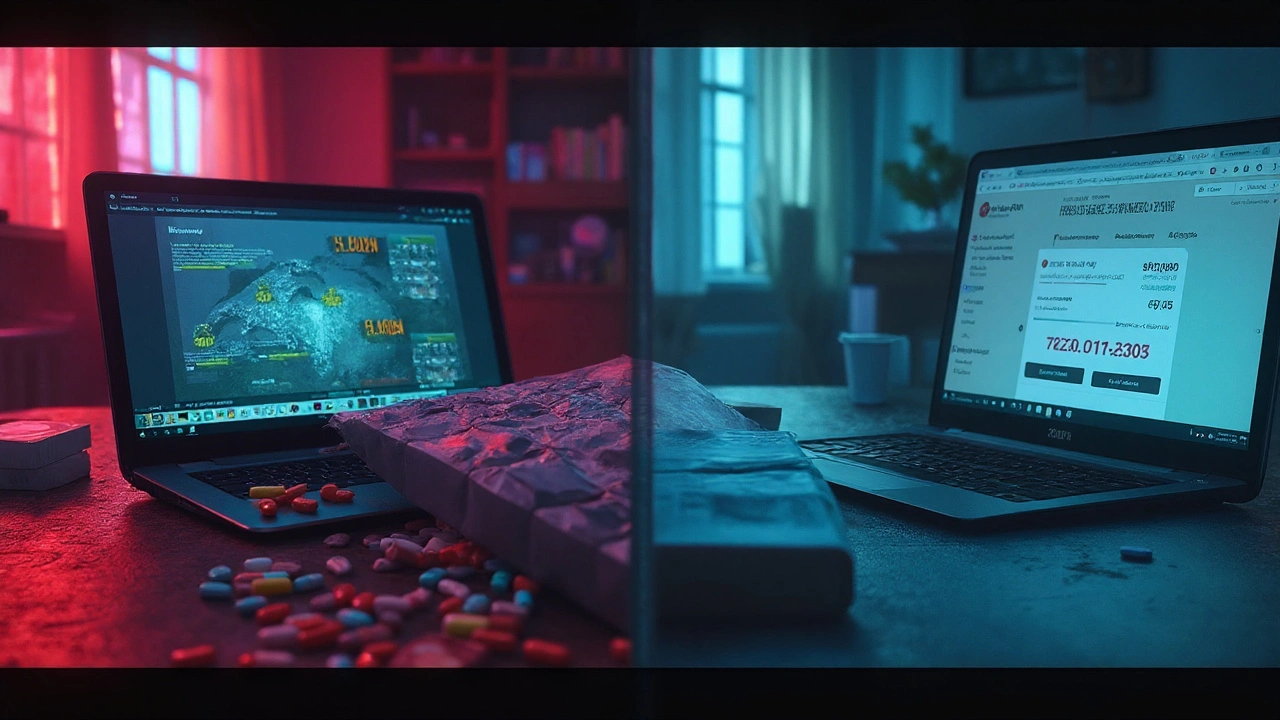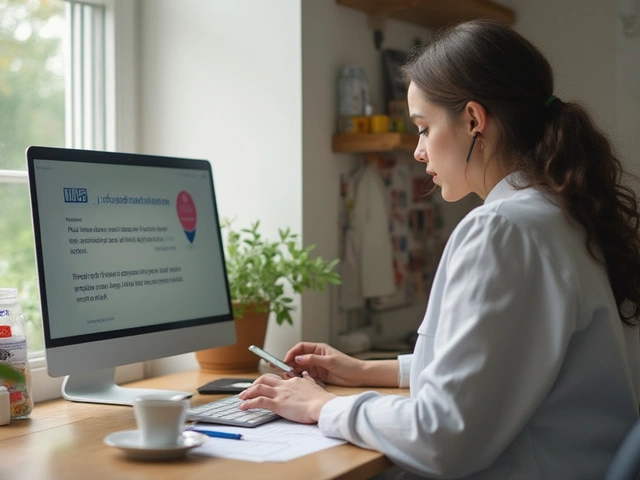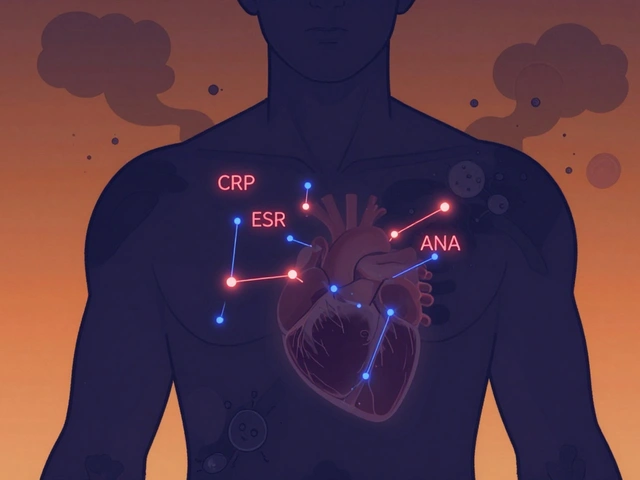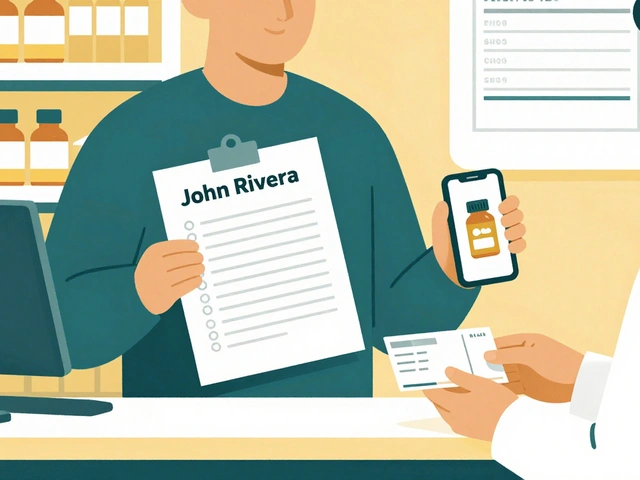
Cheap is easy. Safe is harder. If you're searching for the lowest price on generic Neurontin (gabapentin) online, the real win is paying less without gambling on a fake pill or a sketchy website. Here’s the honest playbook I use when friends ask me where and how to order, what a fair price looks like in 2025, and how to avoid getting burned.
Set expectations: you absolutely can buy generic Neurontin online from licensed pharmacies at a steep discount versus brand. But if a site offers “no prescription needed” or prices that look too good to be true, that’s a hard stop. Gabapentin is a prescription drug. Legit sites will ask for a valid prescription, verify your details, and ship from a licensed facility. That’s not red tape. That’s your safety net.
Use this guide to do five jobs quickly: understand what you’re buying, see real price ranges, spot legit pharmacies, weigh alternatives, and take the next safe step-whether that’s placing an order or talking to a clinician for a prescription or dose check.
What You’re Actually Buying: Gabapentin Basics, Uses, and Who It’s For
Neurontin is the brand. Gabapentin is the generic. Same active ingredient. The U.S. Food and Drug Administration (FDA) requires generics to match brand-name drugs on quality, strength, and effectiveness. The difference you’ll feel is the price, not the clinical effect.
What it treats (FDA-approved): partial seizures and postherpetic neuralgia (nerve pain after shingles). Doctors also prescribe it off-label for some types of neuropathic pain and restless legs. For any off-label use, you should only do it under a clinician’s guidance, not because a website says it’s fine.
Common forms you’ll see online: 100 mg, 300 mg, 400 mg capsules; 600 mg and 800 mg tablets; and a 50 mg/mL oral solution. Don’t switch between liquid and tablets or between strengths without talking to the prescriber. Dosing is individualized and often titrated. Never adjust your dose on your own, and don’t stop abruptly-withdrawal and rebound symptoms are a real risk.
Side effects you’ll want to watch: dizziness, sleepiness, coordination issues, swelling in legs, and weight gain. Combining gabapentin with opioids, benzodiazepines, or alcohol can slow breathing and raise risk for dangerous sedation. The FDA has warned about respiratory depression in higher-risk patients (older adults, lung disease, or those taking other sedatives). If you’re on any of those, your prescriber needs to know before you order.
Legal and access notes: federally in the U.S., gabapentin isn’t a controlled substance, but several states monitor or classify it more tightly. Some require pharmacies to report gabapentin to the state Prescription Drug Monitoring Program (PDMP) or treat it like a Schedule V drug. That can affect refill timing and telehealth rules. Check your state board of pharmacy page or ask the pharmacy before you pay.
Real-World Prices, Terms, and Ways to Pay Less in 2025
Brand-name Neurontin is expensive and rarely worth it if your prescriber is fine with generic. Most people save 80-95% by choosing gabapentin. Cash prices vary a lot by pharmacy and by strength, but the ranges below are what I see when I price-check major U.S. chains and mail-order options as of August 2025.
| Form/Strength | Typical Qty | Brand (Neurontin) Cash | Generic (Gabapentin) Cash | Notes (Shipping/Timing) |
|---|---|---|---|---|
| Capsules 100 mg | 90 | $250-$420 | $8-$18 | Mail-order 2-5 biz days; local pickup same day |
| Capsules 300 mg | 90 | $280-$460 | $9-$22 | Common starter strength; wide price spread |
| Capsules 400 mg | 90 | $290-$480 | $10-$25 | Often similar price to 300 mg |
| Tablets 600 mg | 90 | $340-$520 | $12-$35 | Heavier discounts via mail-order |
| Tablets 800 mg | 90 | $360-$560 | $14-$40 | Check per-mg price; sometimes best value |
| Oral Solution 50 mg/mL | 470 mL | $380-$600 | $25-$75 | Fewer suppliers; ships in insulated packaging |
Where these numbers come from: U.S. cash-price snapshots I run monthly across national chains, mail-order pharmacies, and commonly used coupon platforms, plus wholesaler averages. Your actual total depends on the pharmacy’s discount contract, the strength, and quantity. If your price is way above the high end, you can almost always do better by switching pharmacy or asking for a 90-day fill.
Ways to pay less without cutting corners:
- Ask for generic gabapentin, not brand Neurontin, unless your clinician has a specific reason for brand only.
- Use a 90-day supply when your prescriber approves it. The per-pill price usually drops 15-30% and you pay a single dispensing fee.
- Try pharmacy discount programs or coupons. These can slash the cash price by more than half, especially at big-box stores. Show the price at checkout; most pharmacies will honor it.
- If you have insurance, compare your copay vs. cash price with a coupon. Sometimes cash beats insurance for generics.
- Consider reputable mail-order. You’ll get lower prices on higher counts, and free shipping is common above a small order minimum.
Typical terms to check before you click “buy”:
- Prescription requirement: a legit pharmacy will require an e-prescription or a pharmacist-to-doctor verification.
- Shipping time and cost: standard 2-5 business days is common; expedited 1-2 days costs extra.
- Heat-sensitive packaging for liquid: confirm they use proper packing during hot weather.
- Return/refund policy: most pharmacies cannot accept returns for prescription meds unless there’s a recall or pharmacy error.
- Refill handling: can they auto-refill and remind you? That matters for meds with taper schedules.

Safety First: How to Vet an Online Pharmacy and Avoid Fakes
There are two kinds of “cheap”: the kind that saves you money, and the kind that costs you headaches, lost packages, or unsafe pills. Here’s the quick way to tell them apart.
- Verify it’s licensed. In the U.S., look for a pharmacy licensed in your state. Check the state board of pharmacy’s license lookup. The National Association of Boards of Pharmacy (NABP) also recognizes safe sites.
- Prescription needed. If a site will ship gabapentin with “no prescription required,” close the tab. That’s the biggest red flag.
- Real address and pharmacist access. A legitimate pharmacy lists its licensed location and lets you contact a pharmacist for questions.
- Check where it ships from. You want U.S.-based dispensing for U.S. orders, or the correct local equivalent in your country (e.g., MHRA-registered in the UK, EMA standards in the EU).
- Watch the claims. No pharmacy can legally claim to “cure” chronic pain. Be wary of miracle language and copy riddled with typos.
Data privacy matters too. You’re sharing health info. Look for a clear privacy policy, encrypted checkout, and transparent data-sharing disclosures. If the site harvests data for marketing without consent, that’s not just annoying-it’s a risk to your privacy.
Pro tips I use when sanity-checking a site:
- Price realism: if 90 capsules of 300 mg gabapentin are priced at $3, that’s not a discount-it’s bait. Healthy ranges are in the table above.
- Test the phone/chat. Ask a basic safety question like, “What interactions should I know about with opioids?” A real pharmacist will give a careful, specific answer and may ask your meds list.
- Look up the manufacturer listed on the bottle photo. You should see a known FDA-approved generic maker.
- Skim recent reviews for delivery speed and packaging quality. No delivery photos, no timestamps, and lots of copy-paste language = pass.
If a site checks out but your prescriber won’t send an e-Rx there, ask the pharmacy to request the transfer. Pharmacies handle this every day.
Your Options Compared: Generic vs Brand, Gabapentin vs Pregabalin, Online vs Local
There isn’t one “best” option for everyone. It depends on your condition, dose, budget, and how fast you need the meds. Here’s how I think it through with people.
Generic vs brand: if you tolerate the generic fine, stick with it. The FDA holds generics to the same bar for quality and bioequivalence. Rarely, a filler or dye can bother someone; if that’s you, ask your pharmacist to order a different manufacturer’s generic before paying for brand.
Gabapentin vs pregabalin (Lyrica): both target nerve pain and seizures, but they’re not identical. Pregabalin is also generic now and may work with fewer daily doses for some patients, but it’s still usually more expensive and is federally controlled (Schedule V) in the U.S. Here’s a quick side-by-side to help you ask better questions at your next visit.
| Feature | Gabapentin (Generic Neurontin) | Pregabalin (Generic Lyrica) |
|---|---|---|
| FDA approvals | Partial seizures; postherpetic neuralgia | Partial seizures; fibromyalgia; neuropathic pain (diabetes, postherpetic); GAD in some countries |
| Dosing frequency | Typically 3 times daily | Often 2 times daily |
| U.S. legal status | Not federally controlled; some states monitor or treat as Schedule V | Schedule V federally |
| Typical 30-day cash price (common strengths) | $8-$25 for 300-400 mg caps | $15-$45 for 75-150 mg caps |
| Common side effects | Dizziness, sleepiness, swelling | Dizziness, sleepiness, blurred vision, swelling |
| Abuse/dependence potential | Lower, but misuse reported; watch with other sedatives | Higher relative to gabapentin; controlled for a reason |
Which to pick? If cost is your top constraint and you do fine on three-times-daily dosing, gabapentin usually wins. If you’ve tried gabapentin at an adequate dose and didn’t get relief or had side effects, bring up pregabalin with your clinician.
Online vs local pharmacy: if you need it today or want face-to-face counseling, go local. If you’re stable on a dose and refilling regularly, mail-order usually saves money and time. Online can also make it easier to standardize the manufacturer so you get the same-looking pill every refill.
Insurance vs cash: for low-cost generics like gabapentin, cash with a discount program often beats insurance copays. But if you’ve met your deductible or have a great plan, insurance may be cheaper. It takes 60 seconds at the counter to ask the pharmacy to compare both.

FAQ, Next Steps, and Troubleshooting
Short answers to the questions I hear most often, then a simple game plan depending on where you’re at right now.
FAQ
- Is buying gabapentin online legal? Yes-when you use a licensed pharmacy that requires a valid prescription and follows your country’s pharmacy laws. Avoid “no Rx” sites.
- How low can the price go without it being a scam? In 2025, $8-$25 for 90 capsules of common strengths (300-400 mg) is realistic at many U.S. pharmacies with a discount. Prices under $5 for a 90-count are usually a red flag.
- Will a legitimate site ship internationally? Some do, but laws vary. Within the U.S., look for U.S.-based dispensing. In the UK, look for MHRA registration; in the EU, EMA-compliant pharmacies and national regulators matter.
- Can I switch manufacturers? Often, yes. Tell your pharmacist if you prefer a specific generic maker. Consistency can help you track side effects.
- Do I need to taper when stopping? Usually, yes. Stopping suddenly can trigger withdrawal or worsen symptoms. Only taper under clinician guidance.
- What about evidence for pain relief? For postherpetic neuralgia, high-quality reviews have found meaningful benefit (number needed to treat in the single digits for 50% pain relief at higher doses). For nonspecific low back pain, evidence is weak. Ask your clinician about your specific diagnosis.
Next steps: pick your path
- If you already have a prescription and a stable dose: compare prices at two local pharmacies and one mail-order. Check 90-day pricing. Place the order where total cost + shipping time makes sense.
- If you don’t have a prescription: book a visit (in-person or telehealth). Be honest about your symptoms, prior meds, other sedatives, and alcohol use. Ask whether gabapentin fits your diagnosis and how to monitor side effects. If you live in a state with stricter rules, ask about any refilling limits or PDMP checks.
- If you’re switching from brand to generic: confirm the exact strength and dosage form with your prescriber. Ask the pharmacy to keep you on one manufacturer if possible. Track how you feel for the first 2-3 weeks.
- If cost is still high: request a 90-day script, ask for a different strength that’s cheaper per mg (sometimes 600 or 800 mg tablets split dosing more efficiently), and compare three pharmacies. Bring the price you saw online to the counter.
Troubleshooting
- Shipment delay and you’re almost out: call the dispensing pharmacy immediately. Many can send a small emergency fill to a nearby partner store. Don’t ration or stop cold turkey.
- Side effects (dizzy, too sleepy, swelling): call your prescriber. Don’t self-adjust. A slower titration or dosing-time tweak can help, but that’s your clinician’s call.
- No benefit after weeks: confirm you reached a therapeutic dose and gave it adequate time. If yes and still no relief, revisit the diagnosis or consider alternatives (e.g., pregabalin). Don’t chase higher doses on your own.
- Website looks legit but refuses to take your e-Rx: ask the site’s pharmacist to request a transfer from your current pharmacy. Pharmacies do this routinely.
- Moving across state lines: some mail-order pharmacies can ship to your new address, others cannot. Confirm licensing in your new state before you move your prescription.
My short, ethical CTA: use a licensed pharmacy, get a proper prescription, and squeeze the price with smart levers-generic, 90-day fills, and discount programs. If you’re new to gabapentin, one quick visit with a clinician can save you weeks of guesswork and a lot of risk.
Final thought: cheap shouldn’t mean risky. With the right checks, you can pay the low generic price and still get the safety, counseling, and predictable delivery you’d expect from a top-tier pharmacy.
Jennifer Griffith
lol so cheap gabapentin is now a thing? i just ordered 90 300mg for $5 off some sketchy site called 'meds4u.net' 🤡
Srikanth BH
Hey, I'm from India and I've been buying generic gabapentin from a licensed pharmacy in Mumbai for about a year now. Prices are crazy low here-like $3 for 100 capsules-but I always check the manufacturer and ask for the batch number. Safe beats cheap every time.
Kimberley Chronicle
From a clinical pharmacology standpoint, the bioequivalence thresholds for gabapentin generics are well-documented under FDA AND EMA guidelines. The variability in dissolution profiles between manufacturers can impact steady-state concentrations, especially in renal-impaired patients. Always request batch-specific COAs if you're on polypharmacy.
Roscoe Howard
I don't care how cheap it is. If you're ordering prescription meds online without a U.S.-licensed pharmacist verifying your Rx, you're not being smart-you're being a liability to the entire healthcare system. This isn't Amazon. This is your brain.
Pallab Dasgupta
Bro. I got my 90-day supply of 800mg for $18 from a pharmacy in Ohio. Same pill as the brand. No drama. Just took the coupon, walked in, and boom. Saved $300. Why are people still falling for the 'no Rx' scams? 😭
Lisa Odence
I literally just googled 'gabapentin cheap online' and the first site had a pop-up that said 'GET YOUR MEDS NOW WITHOUT A DR. 😎' and then asked for my credit card and my pet's name. I'm not even joking. This is why America is dying. 🤡💔
Agastya Shukla
The real question isn't about price-it's about access. In rural India, many patients rely on online pharmacies because local clinics don't stock generics or demand bribes. The system fails them. We need better infrastructure, not just moralizing.
Dolapo Eniola
USA thinks it owns the internet. You think your FDA is the only standard? In Nigeria, we get quality gabapentin from licensed African distributors-EMA-certified, cheaper, and no BS. Stop acting like your country is the only one that knows how to do medicine. 🇳🇬💊
Karen Willie
If you're reading this and you're new to gabapentin-please, just talk to your doctor first. I've seen people end up in ERs because they thought 'it's just a nerve pill.' It's not. It's a sedative with a sneaky side effect profile. You don't need to be brave. Just be careful.
fiona collins
Always check the manufacturer. My 300mg capsules from Teva felt different than Mylan’s-dizziness, nausea. Switched back. Consistency matters. Pharmacies should track this for you.
Ellen Sales
I used to buy gabapentin online because my insurance wouldn't cover it... then I got a 90-day script from my VA doctor and paid $12 cash. I cried. Not because I was poor-I was just stupid. You don't need a miracle. Just ask.
Shivam Goel
The price ranges listed here are outdated. I just checked GoodRx-90x300mg gabapentin at Walmart is $7.99 with coupon. CVS? $12.99. Mail-order? $5.99 for 180. The 'real' prices are a myth. The system is rigged to make you think you're saving when you're just being manipulated.
Josh Zubkoff
I read this entire 3,000-word essay like it was a TED Talk. And yet, nowhere does it mention that gabapentin is being abused by college kids and addicts who crush it with alcohol. The real danger isn't fake pills-it's the normalization of this drug as a 'chill pill.' We're creating a generation of sedated zombies. And you're giving them a map.
giselle kate
This is why I hate American healthcare. You can't even get a $5 pill without a 12-page essay, a 30-minute telehealth consult, and a background check. Just let people buy it. If they want to overdose, let them. It's their body. Stop infantilizing everyone.
Leisha Haynes
I just told my doctor I wanted gabapentin for anxiety. He laughed. Said 'you're not epileptic, you're not post-shingles, and you're not old enough to be having nerve pain.' Then he gave me a $10 coupon for a 30-day trial. I got the generic. I'm fine. Sometimes the system works. 🤷♀️
Emily Craig
I'm a 42-year-old mom with fibromyalgia. I've been on gabapentin for 7 years. I switched from brand to generic and didn't notice a difference. But I did notice I could afford groceries again. So yeah, cheap works. Just don't be an idiot and buy from 'gabapentin4life.com'.
Amy Hutchinson
I ordered from a site that said 'no prescription needed' and got a box of pills with no label. I took one. Felt like I was underwater. Called poison control. They said 'thank you for calling, we've had 12 similar reports this week.' Don't be me.
Patricia McElhinney
You people are idiots. If you're looking for 'cheap' gabapentin online, you're not looking for pain relief-you're looking for a high. And now you're gonna blame the system when you overdose. I've seen it. It's not pretty. Stop pretending this is about money. It's about addiction.
Rachel Villegas
I work at a pharmacy. We get 3-5 e-prescriptions a week for gabapentin from telehealth clinics that never talk to the patient. We verify everything. But if you're getting it from a site that doesn't require a real prescription, you're not saving money-you're risking your life.
Shirou Spade
There's a deeper question here: why does a medicine that helps people sleep, calm nerves, and reduce chronic pain become a commodity to be hunted like a rare coin? We treat health like a market, not a right. The real scam isn't the fake pills-it's the system that makes you feel like you have to cheat just to be okay.






Write a comment